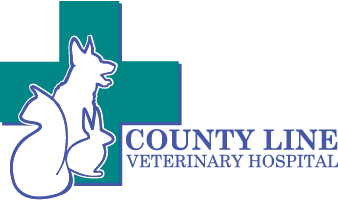Pet Health Articles
-
Allergies are a common condition in dogs. An allergy occurs when the dog's immune system overreacts or is hypersensitive to foreign substances called allergens. This handout outlines allergy types, how they appear, and how they can be treated.
-
Your dog has allergies. These instructions have been provided by your veterinary healthcare team to help you treat your dog for his specific allergy. The instructions that relate to your dog are checked.
-
This handout explains atopic dermatitis (atopy) in dogs, a form of allergic skin disease brought on by an abnormal response to allergens in the environment. The clinical signs, diagnosis, and treatment are outlined.
-
The traditional extracapsular lateral suture ECLS technique is the oldest surgical correction for cranial cruciate ligament (CCL) injury in dogs. The name of the procedure originates from the fact that the joint is stabilized outside the joint capsule (externally). CCL repair surgery typically begins with an initial examination of the inside of the knee. Both the traditional ECLS and the Tight Rope® procedures are considered extracapsular or external repairs of CCL injury. Both yield similar results with similarly low risks.
-
One of the most common injuries to the knee in dogs is tearing of the cranial cruciate ligament (CCL). When the cranial cruciate ligament is torn, surgical stabilization of the knee joint is often required. The development of tibial plateau leveling osteotomy or TPLO was a major advancement in the treatment of CCL rupture. Healing from TPLO surgery is generally rapid, with the dog resuming normal activities quickly.
-
One of the most common injuries to the knee in dogs is tearing of the cranial cruciate ligament (CCL). Several surgical techniques are currently used to correct CCL rupture. The TTA procedure is more commonly performed in dogs with a steep tibial plateau (angle of the top part of the tibia). Healing from TTA surgery is generally rapid and dogs resume normal activities quickly.
-
The cruciate ligaments are two bands of fibrous tissue located within each stifle joint. They join the femur and tibia together so that the knee works as a stable, hinged joint. The two most common causes of cranial cruciate rupture are trauma and degeneration of the ligaments within the joint. There are various surgical techniques to stabilize the knee joint following cruciate rupture. Regardless of the technique used to stabilize the joint, arthritis is likely to develop in the joint as your dog ages.
-
Cushing's disease is a condition in which the adrenal glands overproduce certain hormones. The most common cause of Cushing's disease is a pituitary gland tumor. Cushing's disease may also be the result of a benign or malignant tumor of the adrenal gland itself, or may be caused from the excessive administration of an oral or injectable steroid. Clinical signs, treatment, and prognosis are discussed.
-
Cushing's disease, or hyperadrenocorticism, is the overproduction of cortisol hormone by a dog's body. The clinical signs of Cushing's disease are similar, regardless of the underlying cause of the disease. However, it is essential to identify the type of Cushing's disease as the treatment and prognosis differ slightly depending upon the form of the disease.
-
Dental disease is one of the most common medical conditions seen by veterinarians. The most common dental problems seen in dogs are periodontal disease and fractured teeth. This article discusses the most common dental diseases in cats, signs, diagnostic procedures, treatments, and preventive steps to keep a dog's teeth healthy.

